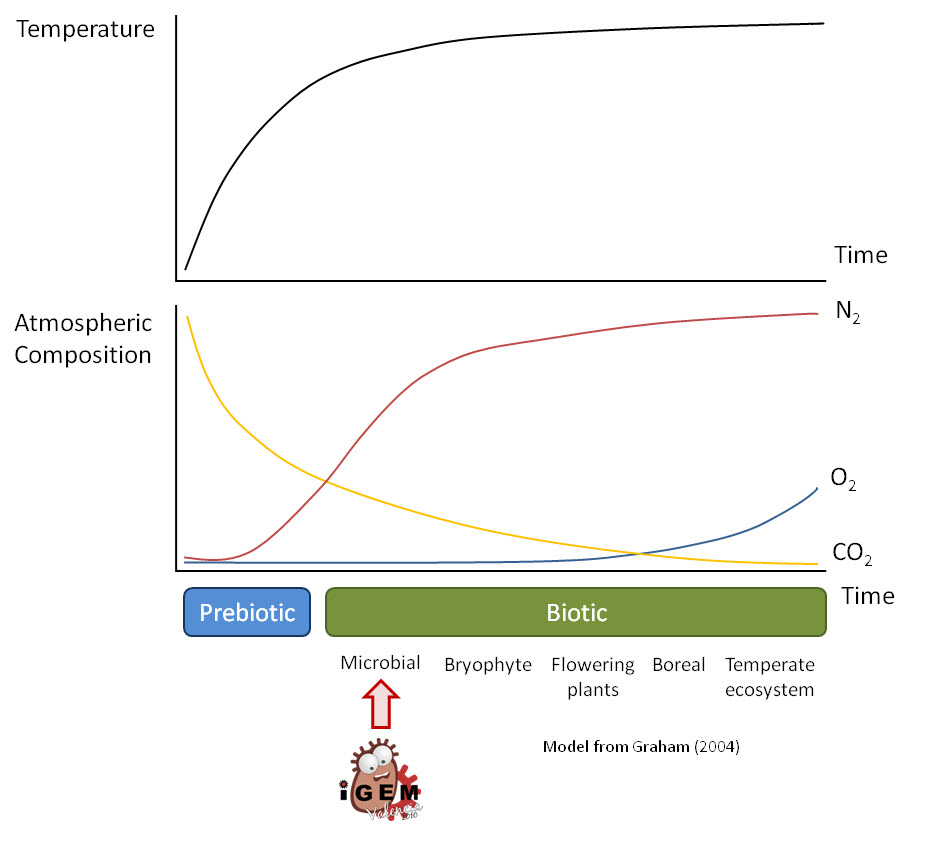Team:Valencia/Project
From 2010.igem.org
Time goes by...
(El tiempo pasa...)
Follow us:

Our main sponsors:

Our institutions:

Visitor location:
>> Home >>
Project Overview
Our ideas for the terraforming of Mars comes from our conviction of the great usefulness of the tools Synthetic Biology provides us in the context of a planetary colonization.
Our project proposes sowing the martian surface with genetically modified yeasts to produce a dark pigment as melanin. This yeast will help to reduce the albedo and then to warm up the martian atmosphere (this will happen in a Mars partially terraformed). The sowing will be done in shallow seas or lakes in the northern plains, craters or impact basins like Hellas.
Melanin synthesis by tyrosinase (EC 1.14.18.1) requires oxygen, we know that, but we propose also a simultaneous sow of oxygen-evolving cyanobacteries, which also will produce the necessary carbohydrates for the heterotrophic yeasts metabolism. The melanin will protect the yeasts against the ultraviolet radiation (Graham, 2004). To increase the yeast survival in a terraforming context, that despite to be partially terraformed will be quite harsh to such microorganisms, we propose the introduction in the yeasts of a LEA protein (Surviving Mars section) . This protein provides resistance against different temperature conditions (low and high) and high-salinity stresses (reference need).
In order to make Mars surface suitable for the introduction of our microorganism it would be necessary to implement previously a prebiotic stage aim to modify the pressure and the atmospheric composition to increase the temperature on the surface (McKay and Marinova, 2001). To do that, it has been proposed the manufacturing and releasing of perfluorocarbons (PFCs) from the martian regolith. Another method would be the installation of orbiting mirrors that would increase the amount of sunlight reaching the surface. Both methods would warm up the atmosphere and increase the pressure enough to allow the sowing of microorganism.
The planetary temperature produced by the biological method we propose to change the albedo would be stabilised in a homeostatic way by a simple system that seems the Daisyworld developed by Watson and Lovelock (1983). We called it the Yeastworld.
At the beginnings, the melanic microorganisms which albedo would be lower than the martian bare ground would increase the atmospheric temperature. Nevertheless, as the temperature was increased some albino forms would appear in the microbial populations.
A prion switch, based in Sup35p, a yeast protein that has prion behaviour (hence the necessity to use yeast in our project), would control this phenotypic change (Regulating Mars temperature). This switch would be turn on with high temperatures. In such conditions the albino forms would have a high selective efficacy due to their high albedo that prevents the overheating. In this context the albino forms would tend to be very numerous in the microbial populations increasing the albedo of the surface. Thereby, the planetary temperature would fall to values in which the melanic forms would be favoured with respect to the albino ones due to his higher use of the thermal energy. Again, the melanic forms would start to be more numerous in the populations increasing the temperature. In the modeling section
 "
"
